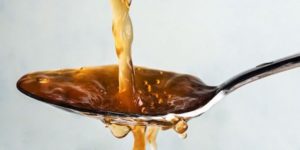As most of you would be familiar, Intermittent fasting is not a diet, it’s a pattern of eating. It’s a way of scheduling your meals so that you get the most out of them. Intermittent fasting doesn’t change what you eat, it changes when you eat.
There are numerous health benefits to intermittent fasting, the most popular one being fat loss, but the most important one is that it is the most effective way to trigger autophagy.
In simple term, autophagy is the body’s way of cleaning out damaged cells, in order to regenerate newer, healthier cells which benefit the body in recycling residual proteins, remove toxic proteins from the cell which attribute to Parkinson’s and Alzheimer’s disease, providing energy and building blocks for cells that could still benefit from repair and prompting regeneration and healthy cells.
There are several different ways of doing intermittent fasting — all of which involve splitting the day or week into eating and fasting periods. These are the most popular methods:
- The 16/8 method: Also called the Leangains protocol, it involves skipping breakfast and restricting your daily eating period to 8 hours, such as 1–9 p.m. Then you fast for 16 hours in between.
- Eat-Stop-Eat: This involves fasting for 24 hours, once or twice a week, for example by not eating from dinner one day until dinner the next day.
- The 5:2 diet: With this method, you consume only 500–600 calories on two non-consecutive days of the week, but eat normally the other 5 days.
There are many many more methods to fast intermittently and there is no ultimate way to do it, there is always the next level you can achieve in your fasting. Similar to you conquering your own Everest, there will always be the next one visible once you conquer this. But there is one basic fundamental in fasting to not to give your body any food that has calories in it and can cause any amount of spike in insulin during the time of fasting.
For people who are just starting out on IF, you may find it difficult. Which can be because of hunger during the time of fasting, cravings for food, long hours, acid reflux, etc. So instead of being overwhelmed with it, here are a few hacks to ease out the process:
- Eat well: When people take on IF since the eating window is short so people tend to eat fewer calories than what is required to carry out a day, which in turn makes the fasting window difficult. Hence eating enough calories is very critical to have to be more in control at the time of fasting. Similarly, what you eat affects your fasting window too. A meal that’s high in refined sugars and grains is quickly broken down into sugar and won’t keep you feeling full for very long. But consuming high-fiber foods and protein during your eating-window will keep you full longer because your body digests them more slowly. High-fiber foods include nuts, beans, fruits and vegetables, and high protein foods including eggs, cottage cheese, meat.
- Graduality: There are different health benefits for different time frames of fasting. But there is one cardinal rule to make sure that you are doing it safely. So, if your body is not comfortable with 16 hours of fasting, start with 12 hours instead and gradually take it to 16 over a week, this way your body will adapt to fasting rather easily.
- Hydration: If your body’s preferred energy source is sugar which is stored in the liver, also known as glycogen then as we go without fuel for 16 hours, this energy is burned, so it disappears a large volume of fluid and electrolytes with it. People often mistake thirst for hunger, so drinking water with lemon and salt, black tea, green tea regularly throughout the day can help suppress the feeling of hunger.
- Having fats: If you just cannot resist the feeling of hunger and get low on energy, consuming fats(like ghee, bulletproof coffee) is your best possible choice since they do not spike your insulin and breaks your fast only for a short duration.
- Apple cider vinegar: Having ACV with lemon, salt, and water prevents you from getting acid reflux, upthrust, hyper-acidity on an empty stomach, and hence aids the process of IF.



